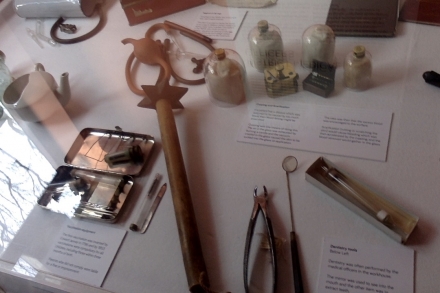Over the October half-term, we invited visitors to the museums to solve our Whodunnit at the Workhouse murder mystery puzzle. Our sleuths demonstrated excellent powers of observation when finding hidden weapons and showed incredible ingenuity when interviewing some less-than-honest suspects.
Using police techniques from Victorian England, our detectives tried their hand at being undercover agents on the hunt for a big reward. They tested for poisons and imagined what it would have been like to use phrenology to prove guilt (or innocence). And finally, they took all their evidence and presented it to a judge.
The culprit was none other than the cook. Our devious cook – possibly in league with the gardener and the tramp major – used a 19th century star-shaped weapon, along with poisonous plants from the garden.
Of all those who completed the murder mystery trail, we chose two winners: one at random and one based on the quality of their detective skills. The winners are:
- Drawn at random: Alexander Cockayne
- For analysing the evidence: Teddy and Oscar Wright
A member of the museum team will be in touch to award your prizes!
THE WEAPONS
Our most diligent detectives spotted that the weapons were hidden in display cases. This was because the weapons form part of our collection. Ripon Museums Trust looks after 9000 objects, mostly related to prisons and policing in Yorkshire and the Humber. Some of our objects are quite old, as is the case of the 19th century star-shaped weapon used by the cook in our whodunnit.
Other examples of weapons are:
- Early 20th century poachers weapon covered in metal studs of various shapes. Seized by PC Garbutt at Ness Cragg, Kilton, 1921.
- 19th century weapon with a heavy black metal star shaped head fixed to one end.
- Victorian life preserver—about 12 inch long with bulbous ends. Believed to be leather, stretched over a rigid core.
